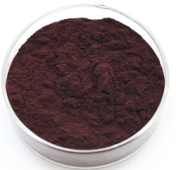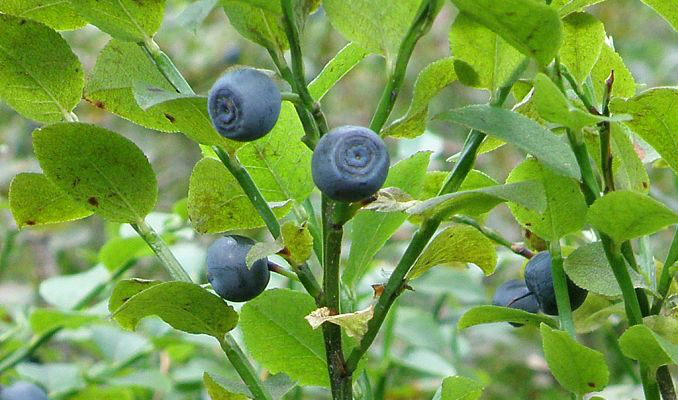China New Product Bilberry extract Factory from Costa Rica
China New Product Bilberry extract Factory from Costa Rica Detail:
[Latin Name] Vaccinium myrtillus l.
[Plant Source] Wild bilberry fruit cultivated from Sweden & Finland
[Specifications]
1) Anthocyanidins 25% UV (Glycosyl removed)
2) Anthocyanins 25% HPLC
3) Anthocyanins 36% HPLC
[Particle size] 80 Mesh
[Loss on drying] ≤5.0%
[Heavy Metal] ≤10PPM
[Pesticide residue] EC396-2005, USP 34, EP 8.0, FDA
[Storage] Store in cool & dry area, keep away from the direct light and heat.
[Package] Packed in paper-drums and two plastic-bags inside.
[General feature]
1. 100% extracted from European bilberry fruit, approved ID test from ChromaDex andAlkemist Lab;
2.Without any adultery of other relative species of Berries,such as Blueberry, Mulberry,Cranberry,etc;
3. Pesticide residue: EC396-2005, USP 34, EP 8.0, FDA
4. Directly import the frozen fruit from North Europe;
5. Perfect water solubility,water insolubles<1.0%
6. Chromatographic fingerprint match EP6 requirement
[What is bilberry fruit]
Bilberry (Vaccinium Myrtillus L.) is a kind of perennial deciduous or evergreen fruit shrubs, mainly found in subarctic regions of the world as in Sweden, Finland and Ukraine, etc. Bilberries contain dense levels of anthocyanin pigments, which was said popularly to have been used by World War II RAF pilots to sharpen night vision. In fork medicine, Europeans have been taking bilberry for a hundred years. Bilberry extracts entered the healthcare market as a kind of dietary supplement for effects on vision enhancement and visual fatigue relief.
[Function]
Protect and regenerate rhodopsin and cure the eye diseases;
Prevent the cardiovascular diseases
Antioxidant and anti-aging
Softening blood capillary, enhancing the heart function and resisting cancer
Product detail pictures:

Related Product Guide:
carry on to boost, to guarantee products excellent in line with market and consumer standard specifications. Our enterprise has a quality assurance system are actually established for China New Product Bilberry extract Factory from Costa Rica , The product will supply to all over the world, such as: America, Algeria, Qatar, Due to the stability of our products, timely supply and our sincere service, we are able to sell our products not only over the domestic market, but also exported to countries and regions, including the Middle East, Asia, Europe and other countries and regions. At the same time, we also undertake OEM and ODM orders. We will do our best to serve your company, and establish a successful and friendly cooperation with you.
Pycnogenol® is one of the key ingredients in Naturally Plus SUPER LUTEIN MIRTOPLUS supplement.
Super Lutein & Izumio International – call / whatsapp to Super Lutein Izumio +65 9101 5527
For more information please call / whatsapp to +65 9101 5527
or visit www.BlueOceanWellness.com
Thank you for checking out my Vega Sport Plant Based Vegan Protein Review 2017. I hope this video helped you guys out. Remember to comment below if you have any questions.
Vega Sport Plant Based Vegan Protein 2017 is filled with ingredients that cater directly to a vegan diet. The shining stars of this protein powder are the ingredients that Vega Sport has. Vega Sport is a highly regarded vegan protein and should definitely be something to try out if you are a vegan.
Pick Up Your Own Vega Sport Plant Based Vegan Protein: https://amzn.to/2sFTTa0
Benefits of Vega Sport Plant Based Vegan Protein 2017
-30 g Plant Based Protein
-6 G BCAA
-1 billion CFU Probiotics
-Non-GMO
-Vegan Protein
-Vegan Certified
-Plant Based Protein
-Muscle Recovery
-Muscle Strength
Vega Sport Plant Based Vegan Protein Ingredients.
-6g’s of BCAA’s which help with your recovery using the branched chain amino acids.
-No sugar is added to this vegan protein.
-30 g’s of a plant based protein consisting of peas, alfalfa, pumpkin seed, and organic sunflower seeds.
-Glutamic Acid 6.3 g
-Proline 1.6 g
Here were some of the ingredients in Vega Sport Plant Based Vegan Protein.
Again, thanks for coming by to check out my Vega Sport Plant Based Vegan Protein 2017 Review. The best spot get a supplement review and to buy supplements online.
Learn More
Glutamic Acid: Watch:https://youtu.be/kb6NrtRPY14
What is a vegan diet? Read: https://www.health.com/health/gallery/0,,20773383,00.html Watch: https://youtu.be/yKp8-X1zZqo
What is Vegan Protein? Read: https://www.health.com/health/gallery/0,,20718479,00.html Watch: https://youtu.be/fuc7IDQk760
The factory can meet continuously developing economic and market needs, so that their products are widely recognized and trusted, and that's why we chose this company.









